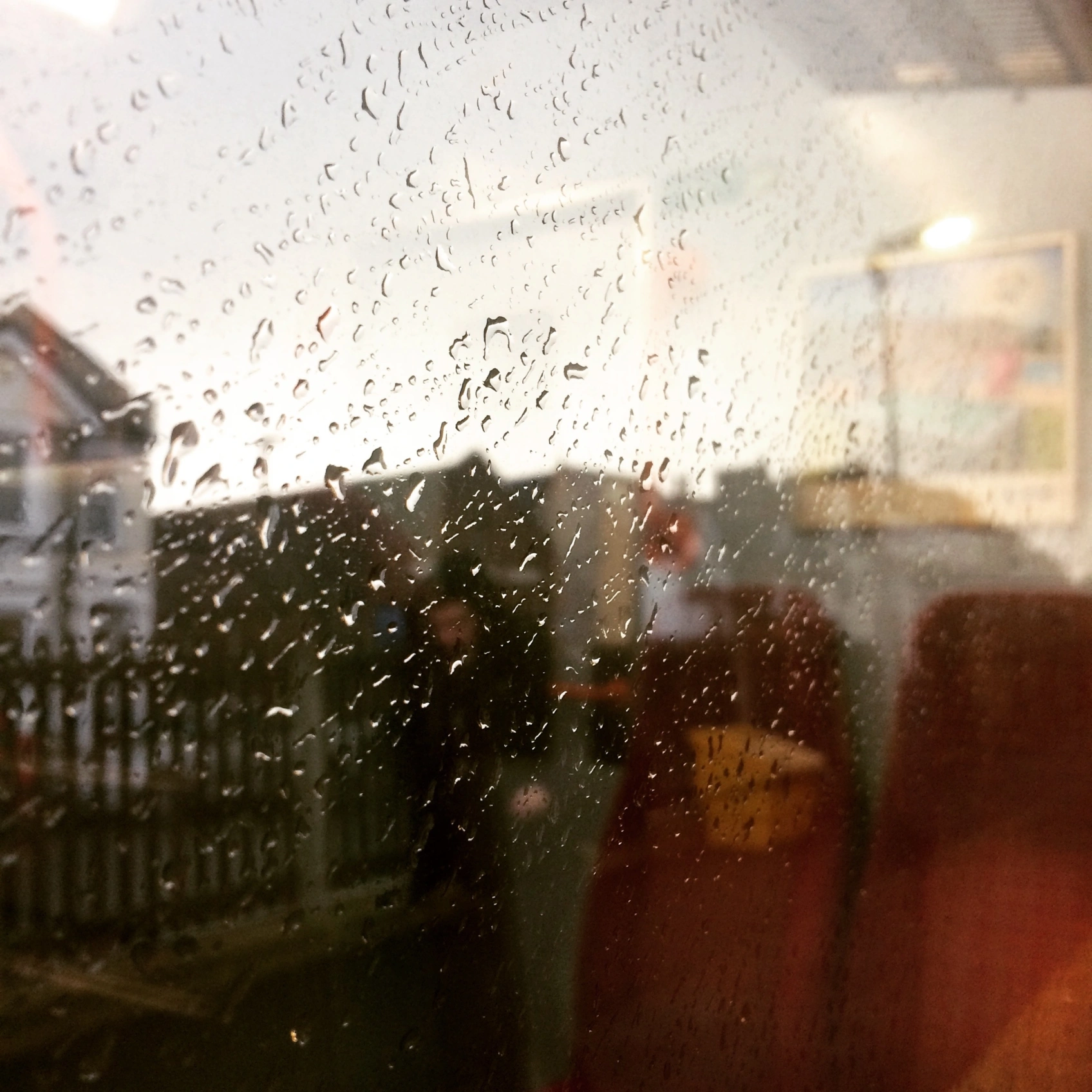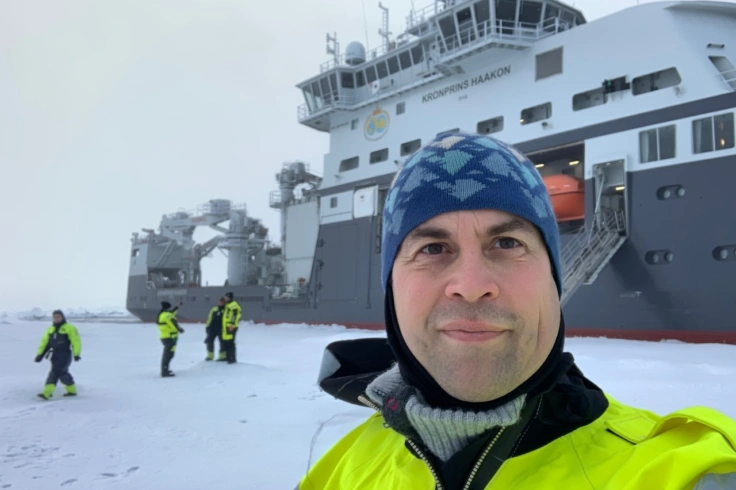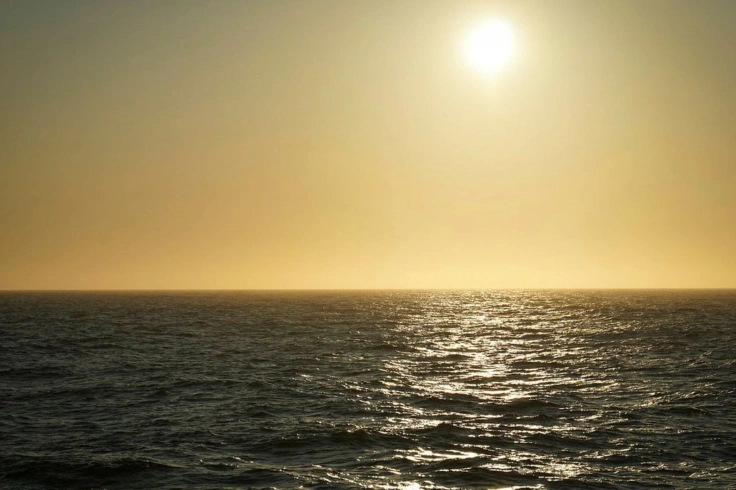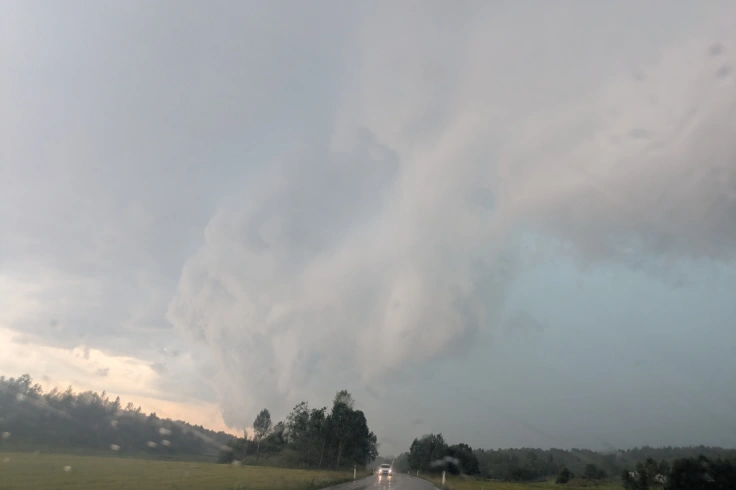
When the temperature rises by one degree, the air can absorb around seven percent more water, thus producing more rain.
So why doesn't it rain more?Our Research Areas
Find an Expert
Our researchers are employed either at NORCE, UiB, the Nansen Center or the Institute of Marine Research. The researchers work together across various scientific disciplines. Find researchers with backgrounds in meteorology, oceanography, geology, geophysics, biology and mathematics, among others.
Projects
Researchers at Bjerknes are involved in several projects, both nationally and internationally. The projects are owned by the partner institutions, with the exception of our strategic projects.
Publications
Researchers at the Bjerknes Center publish more than 200 scientific articles each year.
Popular Science
Se alleNews
Se alle
04.09.25
Blue specks in the white north
On or in the North Pole? Prepositions can be hard, especially when ice turns into water. This week a research expedition reached the North Pole – surprisingly easily.

21.08.25
"Perfect Storm" under the midnight sun triggered marine heatwave and explosion of salmon lice
On August 5, 2024, a marine heatwave began along the coast of Lofoten in Northern Norway. It lasted for 21 days, with sea temperatures measured at a record high. This caused salmon lice to thrive.

20.08.25
"Why doesn't it rain more?"
Climate change enhances extreme rains more than the ordinary drizzle. New research shows that frontal rain increases the most, and illustrates why extreme rains caused by other phenomena are not equally affected.
Events
Se alle
15.09.25
"Role of atmospheric forcing on the North Atlantic dynamic and its robustness in coupled climate".
The next BCCR Monday Seminar will be given by Tillys Petit from the National Oceanographic Centre in the UK. Abstract The Atlantic Meridional Overturning Circulation (AMOC) plays a key role for the Northern Hemisphere climate and, for almost two decades, climate scientists have been concerned with the possibility of a slowing AMOC due to changes in deep water formation over the Labrador and Greenland seas. However, the OSNAP array revealed that the role of deep convection in the Labrador Sea might be overestimated in climate models, which make the future of the AMOC uncertain. To help reconcile these opposing perspectives, I will synthesize my research on the drivers of the North Atlantic dynamic and on their representation in coupled climate models. In a first part, I will review different observation-based estimates of water mass transformation in the subpolar gyre, showing that the deep water is formed primarily in the Irminger and Iceland basins by local buoyancy forcing. A second part will focus on the representation of deep water formation in coupled climate models. These studies shed light on model biases leading to large deep water formation over the Labrador Sea and on their implications for the AMOC at OSNAP latitudes. Finally, a third part will focus on the southward propagation of deep water and on the coherence of the AMOC variability over the North Atlantic. About the speaker Tillys Petit is a Research Scientist at the National Oceanography Centre (UK) specialized in the large-scale ocean circulation and water mass transformation in the North Atlantic. She has done her PhD at IFREMER (France) on the ocean circulation over the eastern subpolar gyre from observations. During her postdoc at Duke University/Georgia Tech (US), she worked on the linkages between buoyancy forcing and volume fluxes at OSNAP, and investigated the connectivity of the AMOC between the subpolar and subtropical gyres from high-resolution models. Then, she continued working on the AMOC and water mass transformation at the University of Reading (UK), but with a focus on the representation of these processes in CMIP-class climate models. She joined the NOC in 2023, where she is developing lower-cost means of observing the AMOC at the RAPID array. She is also co-I on two projects that seek to address gaps in our understanding of Subpolar North Atlantic tipping points.

16.09.25
Stormtracks group meeting 17 September
Yangfan will share some preliminary results on Deep Learning based precipitation downscaling to 1km resolution over Western Norway. The meeting will be hybrid and here is the zoom link for those who want to join remotely: https://uib.zoom.us/j/62886269543?pwd=ajWbi97zr0hbniaoQdZkUtD2EUSSri.1 Meeting ID: 628 8626 9543; Password: qSKTfKU3 The meeting schedule for this semester is in the following google doc. Please do fill in a slot when you would like to speak. We have many open slots. Ongoing works are most encouraged! https://docs.google.com/document/d/1yjicxkFp_8Y17LVftgksb1SnqSUSUXogg0pOFZfbK0g/edit?usp=sharing

19.09.25
Prøveforelesning Wanyee Wong: Constraining the chronology of ocean sediments – an overview of available approaches and their advantages and limitations
KUNNGJØRING PRØVEFORELESNING Institutt for geovitenskap Det matematisk-naturvitenskapelige fakultet Universitetet i Bergen Ph.d.-kandidat Wanyee Wong holder prøveforelesning over følgende oppgitte emne for ph.d.-graden: Constraining the chronology of ocean sediments – an overview of available approaches and their advantages and limitations Tid og sted: Fredag 19. september 2025, kl. 13.15 Auditorium 4, Realfagbygget Komité: Professor Ulysses Silas Ninnemann, Institutt for geovitenskap (leder for komiteen) Professor Anna Nele Meckler, Institutt for geovitenskap Førsteamanuensis Bjarte Hannisdal, Institutt for geovitenskap Adgang for interesserte tilhørere. VELKOMMEN!





